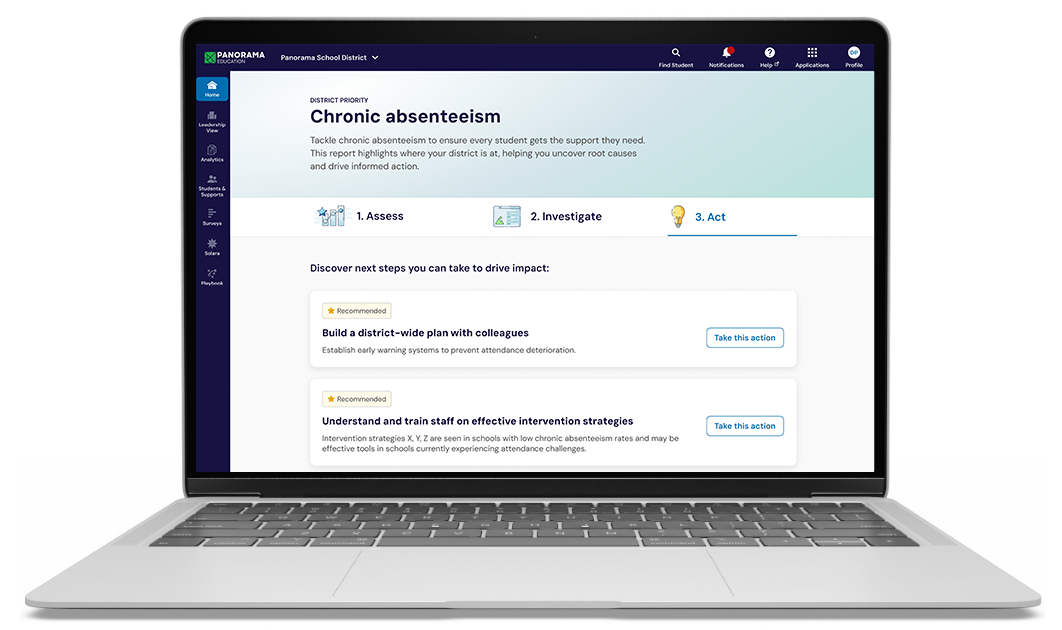When students feel heard and see their feedback lead to meaningful change, they become more engaged in learning and more connected to their school community. That engagement makes a marked impact in attendance, academic performance, and student behavior.
Traditional evaluation methods often highlight the educator’s perspective instead of the student experience. By using research-based student voice surveys, districts can capture how students truly feel about their classrooms, relationships, and learning environments.
What Is Student Voice in K-12 Education?
Student voice in education refers to the meaningful opportunities students have to share their perspectives and influence decisions that shape their learning experiences. It’s about listening to students’ insights on classroom instruction, school culture, and district priorities, and then acting on that feedback to create stronger learning environments.
When schools intentionally elevate student voice in K–12 education, they gain a clearer picture of what helps students feel engaged, supported, and motivated to learn. From classroom practices to districtwide policies, student feedback becomes a powerful tool for continuous improvement.
Why Student Voice Matters for District-Level Decision Making
Student voice matters because research consistently shows a clear link between student feedback and improved outcomes in academic performance, engagement, and school climate.
In one study of 1,751 middle and high school students, those who had at least one teacher actively using student voice practices earned higher GPAs, achieved better math grades, and had lower absenteeism rates than their peers.
Another systematic review of 37 studies found that only 12 reached transformative levels of student voice—where students shared real influence over decisions. Most remained consultative, asking for input without meaningful follow-through.
Even in districts where educators value student perspectives, many students still report limited opportunities to shape their school experience. This gap highlights why district leaders are prioritizing structured, research-based approaches to listening to students and turning feedback into action.
How Districts Turn Student Voice Into Action
Districts use student surveys to gather authentic feedback, analyze what students report about their experiences, and apply those insights to guide decisions that shape schools, classrooms, and culture.
- Student survey data collection using research-backed instruments: Durham Public Schools uses student survey data to gain what educators describe as “phenomenal” insights into student thinking—helping ensure students feel seen and heard in district operations. Validated instruments give leaders confidence that the data they collect truly measures what matters for student success.
- Regular feedback cycles rather than one-time data collection: Districts track trends over time and respond to emerging needs. Leaders can see whether new initiatives are working or require adjustment.
- Data analysis and pattern identification across schools and student groups: District leaders can pinpoint which schools need targeted support and which practices are strong enough to replicate.
- Response systems that close the loop: Students see how their input leads to action, while educators receive timely, actionable data to inform instruction and school climate work.
- Integration with professional development and school improvement planning: Student feedback guides where to invest training resources and which initiatives to prioritize.
- Connection to MTSS frameworks: Student perspectives help leaders understand which students need additional supports and whether interventions are addressing the right needs.
- Alignment with state and federal accountability requirements: Student voice data provides the qualitative context behind quantitative metrics, helping districts tell a more complete story about performance and growth.
Benefits of Prioritizing Student Voice
When districts prioritize student voice, they see measurable improvements in academic outcomes, teaching practices, school communities, and resource allocation. Student feedback helps leaders identify challenges early, strengthen student leadership skills, and create more responsive and inclusive schools. The impact reaches from individual classrooms to districtwide culture and climate.
Higher Quality Teaching and Learning
Student feedback gives teachers actionable insights into instructional quality, accelerating improvement more effectively than traditional observation methods. Teachers receive direct feedback from students about what’s working and what needs adjustment—revealing how instruction is experienced rather than how it’s perceived during a single evaluation.
By looking at trends in student responses, teachers can make targeted changes and then measure whether those adjustments improve student experiences in the next feedback cycle.
Stronger School Communities
Student voice in schools fosters belonging and stronger connections between students and educators. These relationships drive better attendance, lower dropout rates, and stronger graduation outcomes.
Early Problem Identification
Students often notice issues before they appear in discipline data or attendance reports. Their daily experience in classrooms and hallways gives them a perspective adults can easily miss.
When a teaching strategy confuses an entire class or peer conflicts start to disrupt learning, students sense it immediately. Regular feedback cycles provide leaders with these early warning signals, allowing them to intervene before small issues grow into broader challenges that affect school climate or achievement.
More Responsive Resource Allocation
Student feedback gives district leaders the evidence they need to make informed decisions about professional development, curriculum, and policy.
When students identify instructional challenges, leaders can target training and support in those areas. When students highlight curriculum gaps or policy barriers, districts have concrete data to justify budget adjustments and purchasing decisions. This approach ensures spending aligns directly with the needs students identify.
Why Panorama Student Surveys Are the Best Solution for District Leaders
District leaders need tools they can trust to capture authentic student voice and act on it at scale. Panorama Student Survey, developed in partnership with researchers at the Harvard Graduate School of Education, help districts measure what matters most for student success—from belonging and classroom climate to teacher-student relationships and engagement.
With research-backed surveys available in more than 30 languages, Panorama enables every student to be heard. District leaders can disaggregate data to identify equity gaps, monitor progress over time, and connect student feedback directly to academic and attendance outcomes. The result is a more complete understanding of student experiences and the clarity to make changes that help all students thrive.




.jpg)

.jpg)
